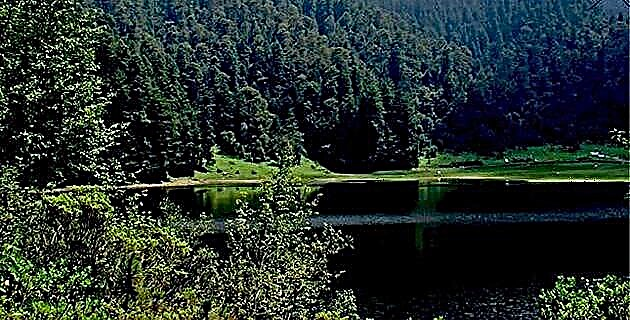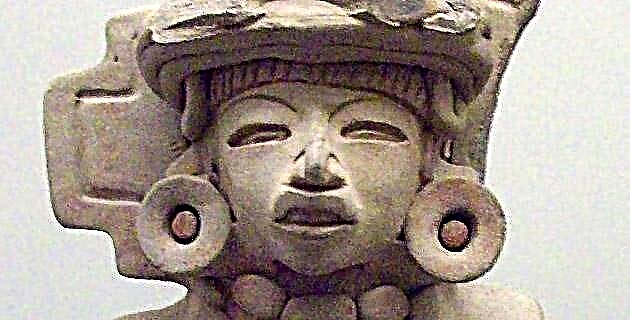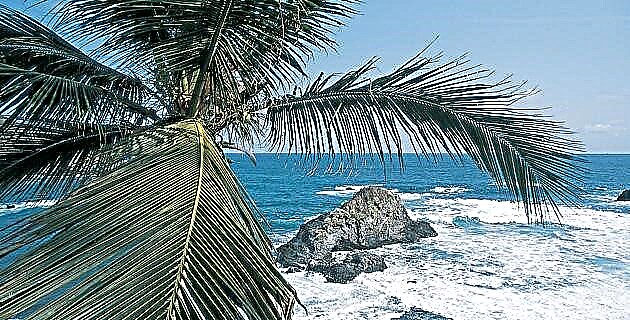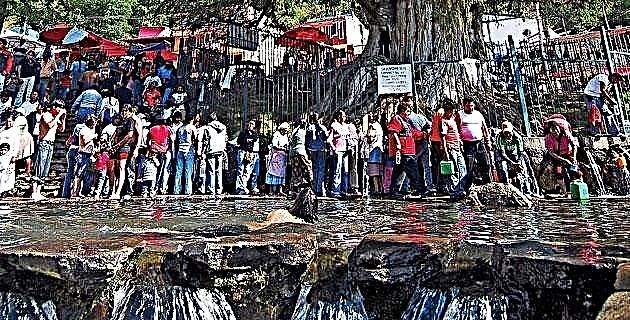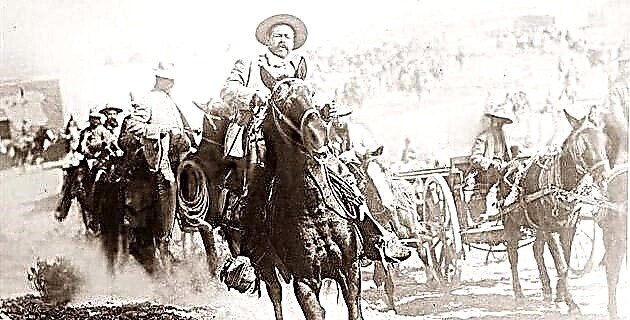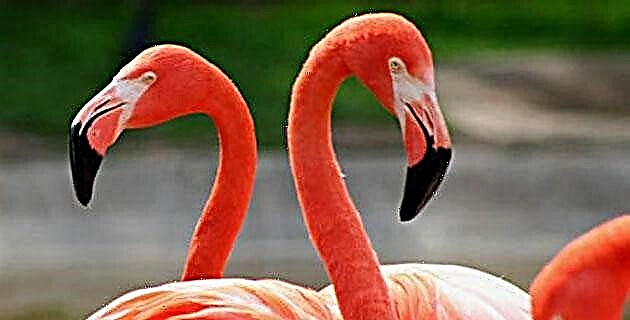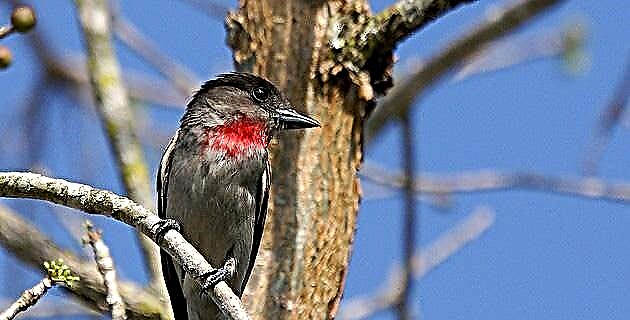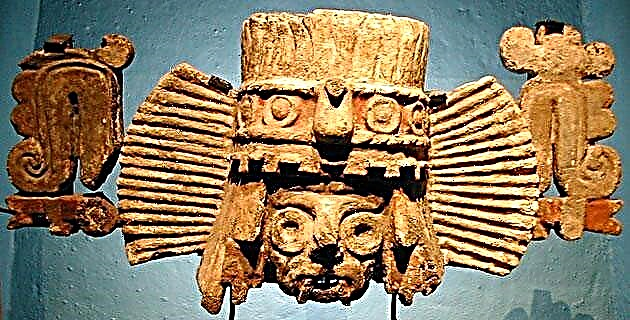
Let us now see why the shrines of the Templo Mayor were dedicated to Huitzilopochtli and Tláloc. Thus says the Franciscan:
The main tower of all was in the middle and was higher than all, it was dedicated to the god Huitzilopochtli ... This tower was divided at the top, so that it seemed to be two and thus had two chapels or altars at the top, each covered with a spire, and at the top each had its different insignia or insignia. In one of them and more main was the statue of Huitzilopochtli ... in the other was the image of the god Tlaloc. In front of each one of these was a round stone like a block that they called téchatl, where those who sacrificed to the honor of that god killed ... These towers had their faces to the west, and climbed by very narrow and straight steps ...
As can be seen, the description is very close to what archaeologists later found. Let us now see what Bernal Díaz del Castillo recounts in his True Story of the Conquest of New Spain: “On each altar there were two lumps like a giant, with very tall bodies and very fat, and the first, which was on the right hand side, they said it was that of Huichilobos, their god of war. Referring to Tlaloc he says: “At the top of the whole cu was another concavity very richly carved of wood from it, and there was another lump like half a man and half a lizard ... the body was full of all the seeds that were in all the earth, and they said he was the god of crops and fruits ... "
But who were these gods? What did they mean? To begin with, we will say that Huitzilopochtli means "left-handed, or southern hummingbird." This god is described as follows by Sahagún:
This god named Huitzilopochtli was another Hercules, who was very robust, with great forces and very warlike, a great destroyer of peoples and a killer of people. In wars, he was like live fire, very fearful of his opponents ... This man, due to his strength and skill in war, was greatly appreciated by Mexicans when he was alive.
As for Tlaloc, the same chronicler tells us:
This god called Tlaloc Tlamacazqui was the god of the rains.
They had him give the rains to irrigate the land, through which rain all the herbs, trees and fruits were created. They also had him sending hail and lightning and lightning, and storms of water, and dangers of rivers and sea. Being called Tláloc Tlamacazqui means that he is a god who lives in earthly paradise, and who gives men the maintenance necessary for bodily life.
With the character of each god thus defined, we can conjecture that their presence in the Aztec temple derives from a fundamental aspect: Huitzilopochtli, solar and war god, was the one who daily, with his character as the Sun, defeated the darkness of night. . In other words, he was the one who led the Aztec hosts against their enemies and achieved victory over other groups, who were forced to pay tribute from time to time to Tenochtitlan. Needless to say, the tribute could be in products or labor, all of which were essential to the Aztec economy. Both in the Mendocino Codex and in the Tax Registration, the products that each population had to deliver to Tenochtitlan periodically are indicated. In this way, the Aztecs obtained loads of corn, beans and various fruits, and materials such as cotton, blankets, military attire, etc., in addition to products such as jaguar skins, snails, shells, bird feathers, green stones, lime. , wood ..., in short, countless articles, whether in finished products or raw materials.
It is not easy to find images of this deity. As the myth of his birth relates, he was born with a "lean" foot. In some representations of codices he is seen with the hummingbird on his head. Its transit through the sky, in its character as solar deity, determines the orientation of the Templo Mayor, and its relationship with the south is due to the fact that the Sun, at the winter solstice, leans further south, as we will see later.
Several warrior songs were made in honor of the god and the activity of the war, as can be seen in the following lines:
Oh, Montezuma; oh, Nezahualcóyotl; oh, Totoquihuatzin, you wove, you entangled the Union of princes: One instant at least enjoy your cities over which you were kings! The Eagle's mansion, the Tigre's mansion, as well, is a place of combat in Mexico City. Beautiful assorted flowers of war make roar, they tremble until you are here. There the eagle becomes man, there the tiger cries in Mexico: it is that you rule there, Motecuzoma!
In the case of Tláloc, its presence was due to another of the pillars of the Aztec economy: agricultural production. Indeed, it was up to him to send the rains on time and not overdo them, as it could cause the death of the plants, just as if he sent hail or frost. That is why it was essential to maintain the balance of the god with appropriate rituals that were celebrated in certain months, either to him or to deities related to him, such as the tlaloques, his assistants; Xilonen, goddess of young corn; Chalchiuhtlicue, his wife, etcetera.
Tlaloc was represented, from the most remote times, with his characteristic blinders or rings that surrounded his eyes; two large fangs protruding from its mouth and a serpent's forked tongue. Other elements that completed his image were the earmuffs and the headdress.
A song to the god of water has reached us, which says:
Owner of water and rain, is there perhaps, is there perhaps as great as you? You are the god of the sea. How many are your flowers, how many are your songs. With them I delight in rainy weather. I am but a singer: flower is my heart: I offer my song.
Tenochtitlan's survival was to be derived from the activity of both deities. It was no accident, then, that the two of them occupied the place of honor in the Great Temple. From this derived the fundamental duality of pre-Hispanic Mexico: the life-death duality. The first, present in Tlaloc, was related to maintenance, with the fruits that would feed man; the second, with war and death, that is, with everything that led man to fulfill his destiny. However, much more was locked behind the image of these gods and the Greater Temple, expressed through myths and symbolisms that made this site the sacred place par excellence ...

